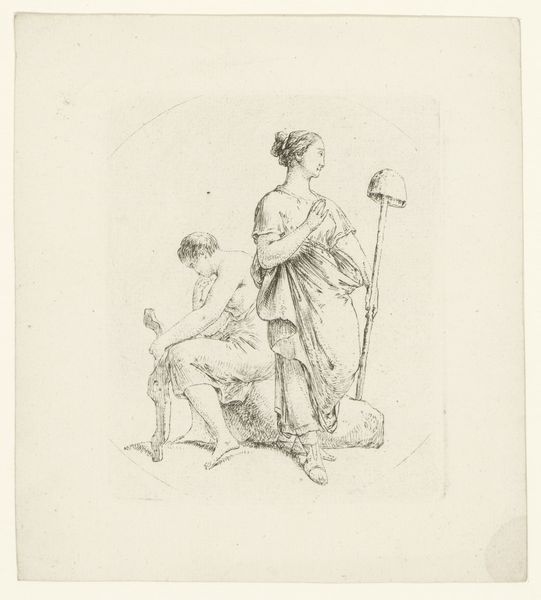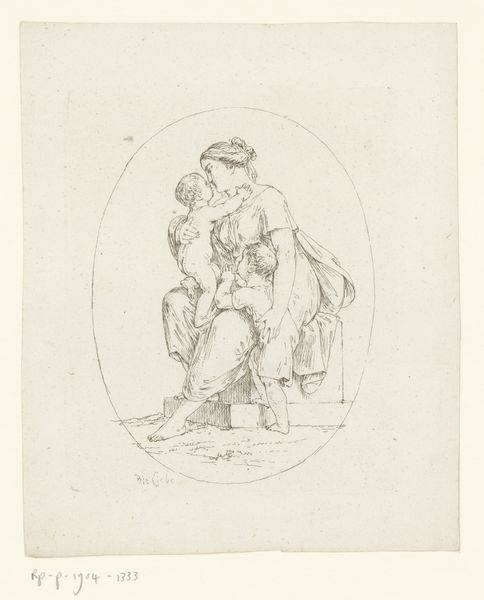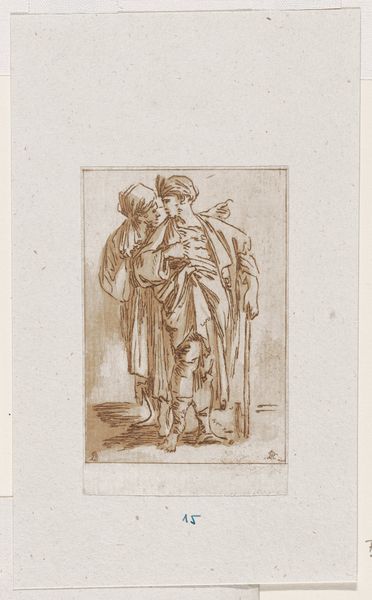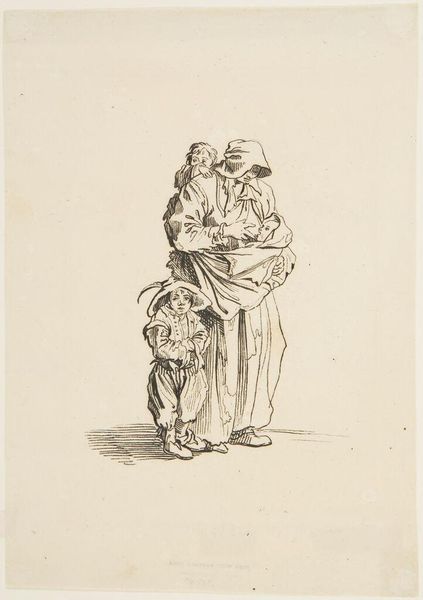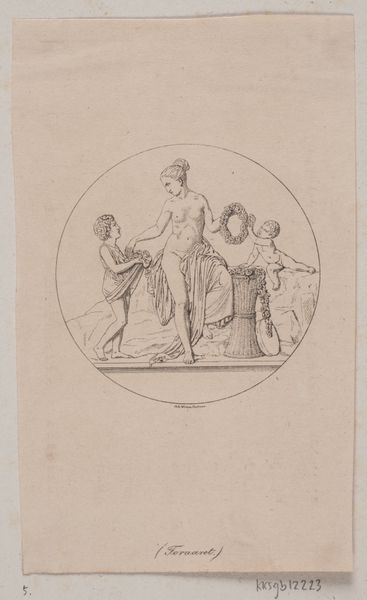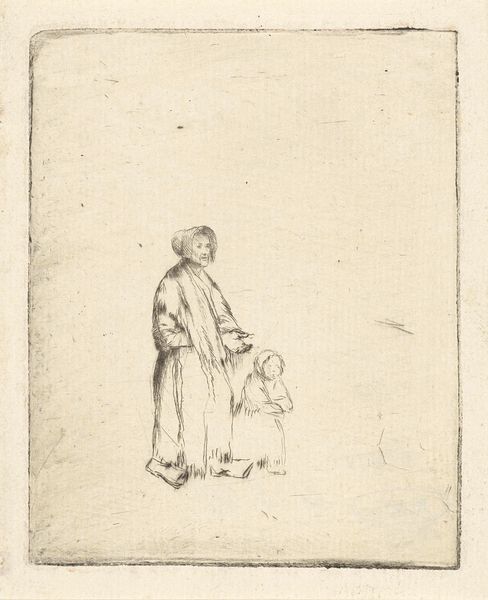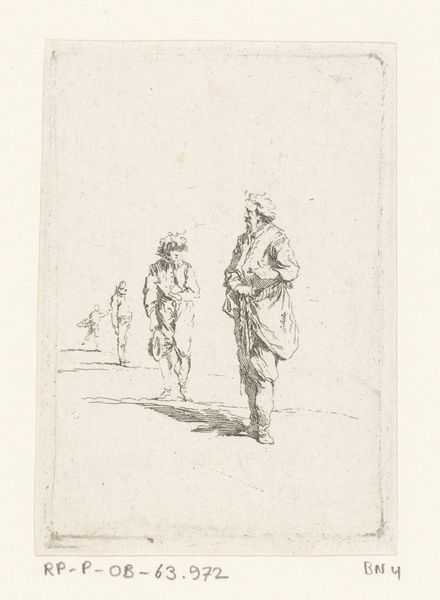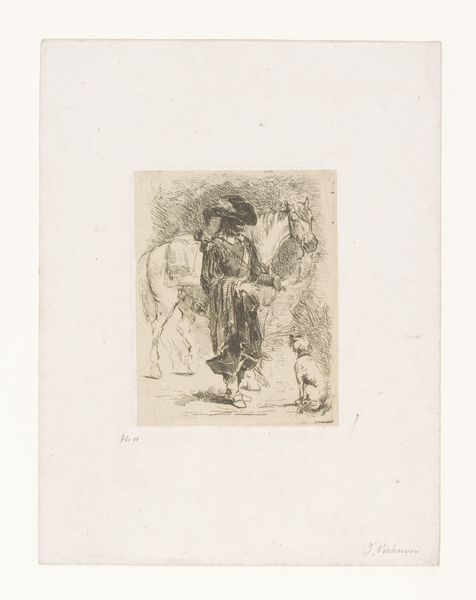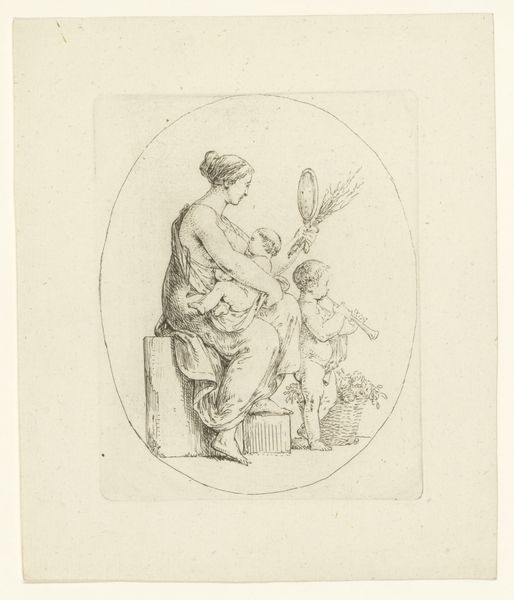
drawing, engraving
#
drawing
#
neoclacissism
#
light pencil work
#
pen sketch
#
pencil sketch
#
old engraving style
#
figuration
#
personal sketchbook
#
ink drawing experimentation
#
pen-ink sketch
#
line
#
sketchbook drawing
#
pencil work
#
history-painting
#
sketchbook art
#
engraving
Dimensions: height 135 mm, width 107 mm
Copyright: Rijks Museum: Open Domain
Christian Bernhard Rode created this allegory of medicine as an etching sometime in the 18th century. The print depicts a female figure, possibly Hygieia, the Greek goddess of health, attending to a young boy. A snake, often associated with healing and medicine, coils around her arm. Made in Germany during the Enlightenment, this work reflects the period's growing interest in science and rational approaches to health. The style recalls classical imagery, aligning medicine with the authority of ancient knowledge. Prints like these were often used in educational settings, instructing future doctors and promoting new ideas to the public. They also shaped perceptions of medicine as a noble and learned profession. To understand this image fully, one could research the history of medical education in 18th-century Germany, as well as study the rise of scientific societies and the visual language used to promote new ideas about health and the human body. The meaning of this art is tied to its social and institutional context.
Comments
No comments
Be the first to comment and join the conversation on the ultimate creative platform.

